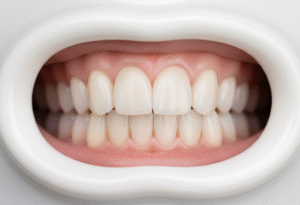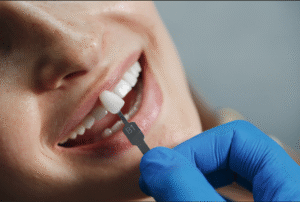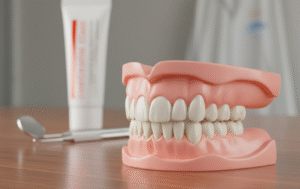A healthy smile depends not only on how teeth look but also on how they function together. When one or more teeth are missing, everyday activities like chewing, speaking, and even smiling confidently can become difficult. That’s where dental bridges come in. A Dental Clinic in Richmond Hill may recommend a dental bridge as an effective and natural-looking solution for replacing missing teeth.
In this guide, we’ll explore what a bridge in dentistry is, how it works, the different types available, and what you can expect during the treatment process.
What is a Dental Bridge?
A dental bridge is a restorative treatment used to fill the gap created by one or more missing teeth. It consists of an artificial tooth (or teeth) held in place by crowns placed on the natural teeth or implants on either side of the gap. These artificial teeth, often called “pontics,” are designed to blend seamlessly with your natural teeth in both function and appearance.
By bridging the gap, dental bridges restore the ability to chew and speak properly while also maintaining the natural shape of your face.
Why Dental Bridges Are Important
Missing teeth do more than affect your smile. They can cause surrounding teeth to shift out of place, leading to bite issues, jaw discomfort, and even bone loss over time. A bridge helps prevent these complications by stabilizing your bite and supporting oral health.
For patients seeking reliable Dental Care in Richmond Hill, dental bridges are often an excellent option to maintain both function and aesthetics.
Types of Dental Bridges
Dental bridges are not one-size-fits-all. Depending on your specific needs, your Dentist in Richmond Hill may recommend one of the following types:
1. Traditional Bridge
This is the most common type, where crowns are placed on the teeth adjacent to the gap. The pontic is then anchored securely in place.
2. Cantilever Bridge
Used when there is only one supporting tooth next to the missing tooth, this type is less common but may be an option in specific cases.
3. Maryland Bridge
Also called a resin-bonded bridge, this type uses a metal or porcelain framework bonded to the back of adjacent teeth, avoiding the need for crowns.
4. Implant-Supported Bridge
This type uses dental implants instead of natural teeth for support. It is often considered one of the most durable and stable solutions for replacing multiple missing teeth.
The Dental Bridge Procedure
Getting a dental bridge usually involves two or more visits to your Hummingbird Dental Clinic:
- Consultation and Examination – Your dentist will examine your mouth, take impressions, and discuss the best type of bridge for your situation.
- Tooth Preparation – In cases where crowns are needed, the supporting teeth are reshaped to accommodate them.
- Temporary Bridge – A temporary bridge may be placed to protect the prepared teeth until the permanent one is ready.
- Placement of Permanent Bridge – Once the custom bridge is crafted, your dentist will fit, adjust, and cement it into place.
Benefits of Dental Bridges
- Restored Function – Makes it easier to chew and speak naturally.
- Enhanced Appearance – Improves your smile and facial balance.
- Preventing Tooth Shifting – Keeps surrounding teeth in their proper positions.
- Long-Term Stability – With proper care, dental bridges can last for many years.
Patients often find that bridges offer a comfortable and aesthetically pleasing solution for missing teeth, allowing them to smile with confidence again.
Caring for a Dental Bridge
Maintaining a dental bridge is much like caring for your natural teeth. Here are some important tips:
- Brush twice a day using fluoride toothpaste.
- Floss daily, especially around the bridge, using a floss threader or water flosser.
- Visit your dentist regularly for check-ups and cleanings.
- Avoid chewing excessively hard foods on the bridge to prolong its lifespan.
By following these steps, you can help ensure the longevity and effectiveness of your dental bridge.
FAQs About Dental Bridges
1. How long do dental bridges last?
With proper care, dental bridges can last anywhere from 5 to 15 years or even longer, depending on oral hygiene and routine dental visits.
2. Are dental bridges noticeable?
No, modern dental bridges are designed to look natural and blend seamlessly with your existing teeth.
3. Is getting a dental bridge painful?
The procedure is generally not painful. Your dentist will use local anesthesia during tooth preparation, and any post-treatment sensitivity usually resolves quickly.
4. Can I eat normally with a dental bridge?
Yes, once your bridge is in place and you’ve adjusted to it, you can eat most foods comfortably. Soft foods are recommended during the initial adjustment period.
5. What’s the difference between a dental bridge and a dental implant?
A dental bridge uses adjacent teeth for support, while an implant is surgically placed into the jawbone to support the replacement tooth. Your dentist will help determine which is best for your needs.
Conclusion
Dental bridges are a time-tested and reliable solution for replacing missing teeth, restoring both function and confidence in your smile. From traditional bridges to implant-supported options, they provide long-term benefits that go beyond aesthetics by protecting your overall oral health.
If you are considering a bridge or want to explore restorative dentistry options, Hummingbird Dental Clinic is one of the best dental clinics in Richmond Hill. Their experienced team is dedicated to delivering high-quality, patient-centered care. For more information, you can reach them at info@hummingbirddental.ca or visit their clinic at 10376 Yonge St #202, Richmond Hill, ON L4C 3B8, Canada for compassionate and professional dental care.










